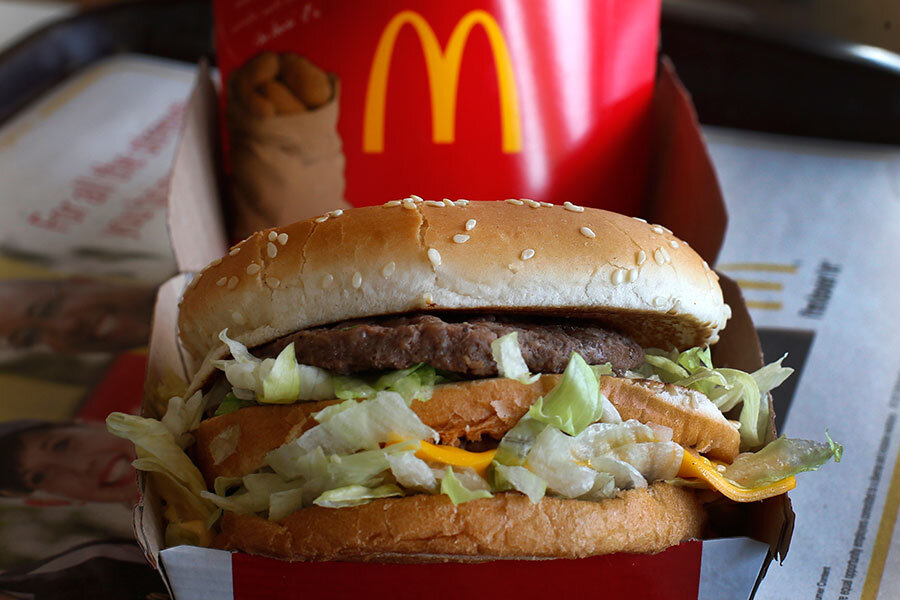Can two new twists on the Big Mac help McDonald's win customers?
Loading...
McDonald’s believes in its Big Mac. So much, in fact, that it’s tripling down.
The fast-food giant announced Thursday that two new burgers based on the Big Mac will be joining its line-up in 2017. The Grand Mac has more meat, while the Mac Jr is a single-patty version of the famous burger that the company says is ideal for eating on the go.
The company “listened to our customers, who told us they wanted different ways to enjoy the one-of-a-kind Big Mac taste,” explained McDonald’s chef Mike Haracz. That may be a good move for the franchise, which some say must pay closer attention to what its customers really want: hamburgers, cheeseburgers, and fries. But could the move also help attract new consumers?
Consumers slowly stopped eating at McDonald’s after the 2004 release of the documentary “Super Size Me,” which graphically portrayed the effects of eating super-sized McDonald’s meals, according to Investopedia. The restaurant’s diversification has also posed problems for the restaurant, with long menus and hard-to-prepare menu items fostering confusion and frustration.
The choice to promote the Big Mac seems to be part of an effort to get back to the company’s roots, a strategy that CEO Steve Easterbrook has been promoting since taking over the helm a year and a half ago. In a note to clients, Nomura analyst Mark Kalinowski reacted positively to McDonald’s making small improvements in its core menu, rather than the dramatic changes that have heralded previous efforts to win new customers.
“We view the new tests [of the Big Mac variants] as a sign of the company’s evolving willingness to have no ‘untouchables’ on the menu,” he wrote. Focusing on their core offerings will help McDonald’s to keep the customers it has coming back, some suggest.
Maintaining their existing clientele is certainly important. Efforts to diversify and win new customers, like the company's ill-fated pizza-selling effort, have often impeded this in the past. But McDonald's may hope that the new Big Macs will also encourage new customers to try the restaurant.
Millennials, who eat out more than any other generation, would be a particular gain for the company. But when just one in five of them have ever tried the original, how likely is it that they will be swayed by new Big Macs?
The answer may hinge on two factors: taste and quality.
“The world isn’t waiting for another burger from McDonald’s,” one former senior McDonald’s executive told The Wall Street Journal last month. “It’s waiting for a better burger from McDonald’s.”
It would take a tangible improvement to win over Millennials, many of whom prefer to frequent gourmet burger chains. And since fundamentally altering the burger’s “one-of-a-kind” taste might alienate existing consumers, raising food quality is a logical answer.
The company has already pledged to eliminate the use of human antibiotics on its chickens, following consumer pressure, and seems to be trending – however slowly – toward the locally-sourced ingredients and organic food that Investopedia argues consumers want. McDonald’s in Canada, for instance, now advertises that all its chicken is sourced within the country. But will it be enough?
The answer may be coming sooner rather than later: McDonald’s customers in Pittsburgh and Florida will have the opportunity to sample the new burgers from mid-November.






